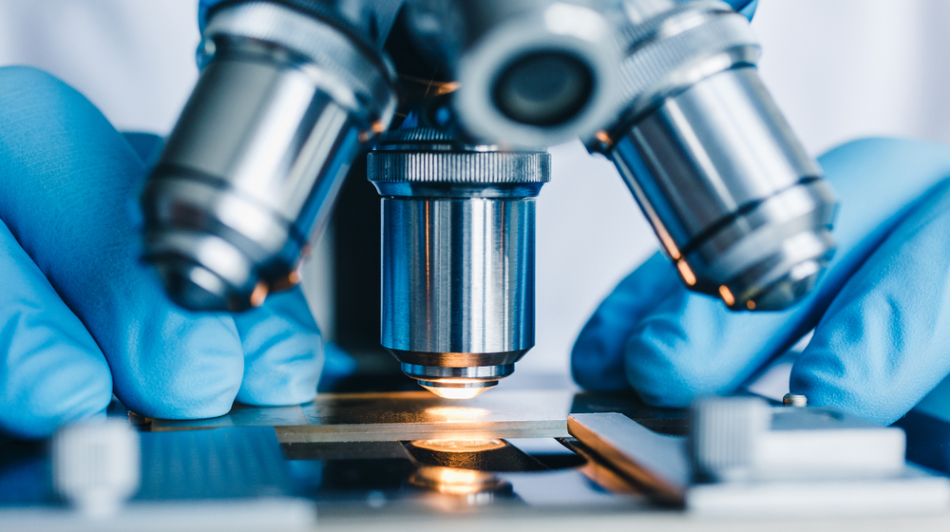
Image Credit: Konstantin Kolosov/Shutterstock.com
Image analysis requires extracting meaningful information from images, mainly digital ones, by means of digital imaging processing techniques. It ranges from something as simple as reading bar-coded tags to identifying a person and characterizing particles in a sample.
In science and industry, image analysis can reduce the complex visual information found in images and convert them to easy-to-interpret, quantitative data in the form of graphs (e.g. size distribution) or simple numbers (e.g. average or mean values). While some information might be lost during the process, it is up to the user to ensure that all essential information is extracted.
Why do we Need to Characterize Particles?
Understanding the properties of materials is very important in a range of areas such as materials science and technology, medicine and pharmacology, biology, ecology, energy technology, and geosciences. Being able to determine whether any fibers are present in a sample, or if a certain particle is the result of contamination from the measurement process, for example, is significant and even critical in some cases.
A particle is considered anything from a drop of liquid, to a bubble of gas, to a fleck of powder and can measure to anything from a nanometre to a centimeter in size. For this reason, particles are often characterized by their size and shape, although they can be classified by their surface properties, charge properties, mechanical properties, and microstructure.
Particle size is a linear length measure, uniquely defined for spheres - diameter or radius. For other shapes, the derived diameter or equivalent diameter is used. A particle’s shape is a complex geometric characteristic that takes into account form, the habit of particle, convexity and surface roughness. Its shape might be isometric or anisometric.
These parameters can play a role in how they behave. For example, the shape of a particle can affect how a powder flows; spherical particles work much better than fibrous shapes.
Any given sample might contain a variety of particles with different dimensions and properties; analysis will quite often give an average figure or a distribution, rather than an exact measurement.
Old-School Particle Characterization
The human brain is a tremendous organ – the visual cortex is superb at analyzing images and extracting high-level information. Manual image analysis involves selecting and marking each particle by hand via a user interface or computer. The task can be tedious, but in areas such as security, remote sensing and medicine, it is hard to replace human analysts with a computer.
However, computers are able to handle much larger amounts of data and extract quantitative data. Even though they might work in place of a human analyst, their image analysis tools – edge detectors and neural networks for example – were inspired by models of human visual perception. Today’s modern image analysis systems can examine tens of thousands of particles in a matter of minutes with a sensitivity below 1µm.
Modern Techniques of Particle Characterization
Manual microscopy is common practice in many labs since microscopy is the most direct measurement of particle size and morphology. But it is monotonous, and classification is subjective. The desire for automation was driven by the need to replace such tasks with a sophisticated means of quantifying the size and shape of particles to yield statistical confidence in the end result.
While manual microscopy uses terms such as round, blocky or sharp, characterization by automatic means assigns a numerical value to various shape descriptors, and image analysis systems then provide a numerical distribution of well-defined shape parameters.
However, automatic particle characterization requires much higher image quality in terms of contrast and often requires image processing – digital image modification to obtain binary images according to operator specifications – before proper image analysis can occur.

 How is image analysis used in the pharmaceutical industry?
How is image analysis used in the pharmaceutical industry?
Static or Dynamic Image Analysis for Particle Characterization?
In dynamic image analysis, the particles flow past one or more cameras and are analyzed. It tends to have a lower sensitivity and therefore is mainly used in quality control.
In static image analysis, the particles are held on a slide and moved by an automated stage for inspection by a camera and microscope. This generally has a higher sensitivity and is used for more complex investigations.
Both have successfully been used in many industrial applications and have the same basic steps:
- The particles are presented to the measurement zone and imaged with a digital camera (CCD or charge-coupled device).
- The particles are separated from the background and size and shape parameters assigned to each particle viewed.
- A report is generated depending on what questions need to be answered.
Additional features in modern image analysis software might also allow scientists to automatically separate two particles when touching each other, fill holes, smooth/remove small protuberances/bumps, separate overlapping acicular/needle-shaped objects and keep track of incomplete objects in the field in order to recombine once all fields are analyzed.
Improved computing power, digital camera technology, and software development have led to a novel replacement to manual microscopy, overcome tediousness for human analysts and developed a valuable tool for standard particle characterization.
Click here for more information on photonics equipment
References and Further Reading
Characterization of particles and particle systems: http://old.vscht.cz/sil/keramika/Characterization_of_particles/CPPS%20_English%20version_.pdf
Image Analysis: A New View of Particle Characterization: https://www.powderbulksolids.com/article/image-analysis-new-view-particle-characterization
What is particle characterization? https://www.atascientific.com.au/particle-characterisation/
Disclaimer: The views expressed here are those of the author expressed in their private capacity and do not necessarily represent the views of AZoM.com Limited T/A AZoNetwork the owner and operator of this website. This disclaimer forms part of the Terms and conditions of use of this website.